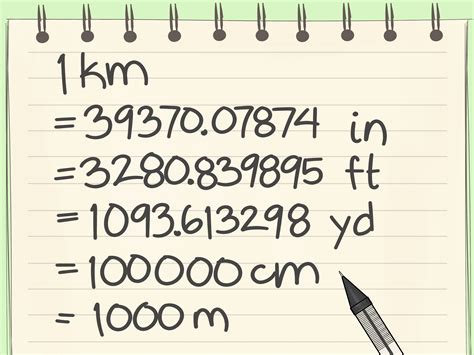What Is 100 Kilometers In Miles
Kalali
Mar 26, 2025 · 4 min read

Table of Contents
What is 100 Kilometers in Miles? A Comprehensive Guide to Metric-Imperial Conversions
Knowing how to convert between kilometers and miles is a crucial skill, especially in our increasingly interconnected world. Whether you're planning a road trip, interpreting a map, or simply understanding global distances, understanding the relationship between these two units of measurement is essential. This comprehensive guide will delve deep into the conversion of 100 kilometers to miles, exploring various methods, providing practical examples, and offering valuable tips for future conversions.
Understanding Kilometers and Miles
Before jumping into the conversion, let's briefly define each unit:
-
Kilometer (km): A kilometer is a unit of length in the metric system, equal to 1,000 meters. The metric system is a decimal system, meaning it's based on powers of 10, making conversions relatively straightforward.
-
Mile (mi): A mile is a unit of length in the imperial system, traditionally defined as 5,280 feet. The imperial system, unlike the metric system, lacks a consistent base, making conversions more complex.
The difference between these units stems from the historical development of measurement systems. The kilometer is a more modern, scientifically based unit, while the mile has a more convoluted history rooted in ancient Roman and British practices.
Calculating 100 Kilometers in Miles: The Basic Conversion
The fundamental conversion factor between kilometers and miles is approximately 1 kilometer = 0.621371 miles. This means that to convert kilometers to miles, you simply multiply the number of kilometers by this factor.
Therefore, to convert 100 kilometers to miles:
100 km * 0.621371 mi/km ≈ 62.1371 miles
We can round this to 62.1 miles for most practical purposes. The precision required will depend on the context. For a casual road trip, 62 miles is sufficiently accurate. For scientific calculations, however, the more precise figure is preferable.
Different Methods for Conversion
While the direct multiplication method is the most straightforward, other methods can be used, particularly when dealing with mental calculations or estimations:
Using an Online Converter:
Many free online conversion tools are readily available. Simply search for "kilometer to mile converter" and enter the value. These tools often offer high precision and handle large or small numbers efficiently. They are particularly helpful when dealing with multiple conversions or complex calculations.
Using a Conversion Chart:
A pre-compiled conversion chart can be a useful quick reference, particularly for frequent conversions. This chart might show common kilometer values and their corresponding mile equivalents. While not as precise as direct calculation, it's suitable for quick estimations.
Approximation for Quick Estimations:
For rough estimations, you can use the approximation that 1 kilometer is roughly equivalent to 0.6 miles or 5/8 of a mile. This simplifies mental calculations significantly. For 100 kilometers, this would give you an approximation of 60 miles. While less precise, it's useful for quick, back-of-the-envelope calculations.
Practical Applications and Examples
The conversion of kilometers to miles has numerous practical applications:
-
Travel Planning: When planning international trips, you'll often encounter distances given in kilometers. Converting to miles can help you better understand the travel time and distances involved. For example, a 100 km drive is approximately a 62.1-mile drive.
-
Mapping and Navigation: Many maps and navigation systems offer the option of displaying distances in either kilometers or miles. Choosing the appropriate unit helps you understand the scale and distances more effectively.
-
Sports and Fitness: In running or cycling, distances are often measured in kilometers in some parts of the world. Converting those distances to miles can help runners or cyclists compare their performances across different measurement systems.
-
Logistics and Transportation: In logistics and freight transportation, converting between kilometers and miles is crucial for calculating fuel consumption, delivery times, and route optimization. Understanding the distances precisely is essential for efficient operations.
Advanced Conversion Scenarios and Considerations
While converting 100 kilometers to miles is straightforward, some situations may require more nuanced calculations:
-
Converting large distances: For exceptionally long distances, the slight discrepancy between the approximate and precise conversion factors can accumulate, leading to noticeable differences in the final result. Using a high-precision conversion factor is crucial for accuracy in these cases.
-
Incorporating other units: Sometimes, you need to incorporate other units, such as feet or meters, into your conversion. This requires a multi-step process involving several conversion factors.
-
Dealing with significant figures: In scientific contexts, the appropriate number of significant figures must be maintained throughout the conversion process to ensure accuracy and avoid misinterpretations.
Conclusion: Mastering Kilometer to Mile Conversions
Converting 100 kilometers to miles, and mastering kilometer-to-mile conversions in general, is a valuable skill with numerous practical applications. Understanding the basic conversion factor, exploring various calculation methods, and acknowledging the nuances of precision and significant figures are all crucial for accurately interpreting and using distances expressed in different units. Whether you're planning a trip, analyzing data, or simply expanding your knowledge of measurement systems, a strong grasp of this conversion will undoubtedly prove beneficial. Remember to always choose the most appropriate method based on the context and the level of accuracy needed.
Latest Posts
Latest Posts
-
63 Is What Percent Of 84
Mar 29, 2025
-
Is Pure Water Homogeneous Or Heterogeneous
Mar 29, 2025
-
80 Out Of 90 As A Percentage
Mar 29, 2025
-
What Is The Continuous Flow Of Electric Charge
Mar 29, 2025
-
20 Is What Percent Of 200
Mar 29, 2025
Related Post
Thank you for visiting our website which covers about What Is 100 Kilometers In Miles . We hope the information provided has been useful to you. Feel free to contact us if you have any questions or need further assistance. See you next time and don't miss to bookmark.
